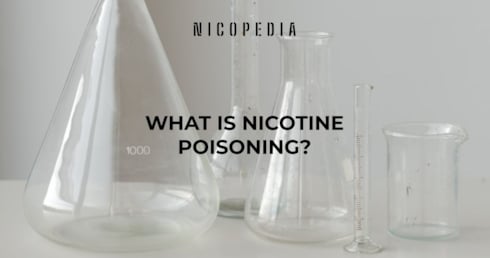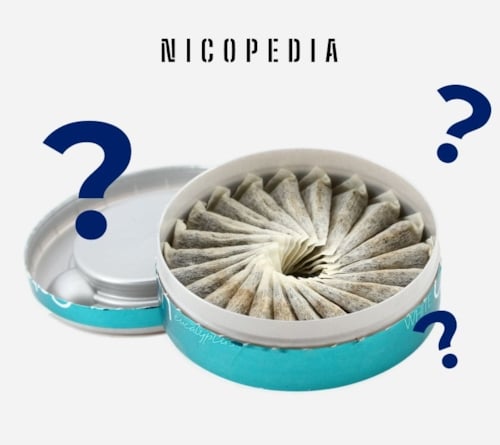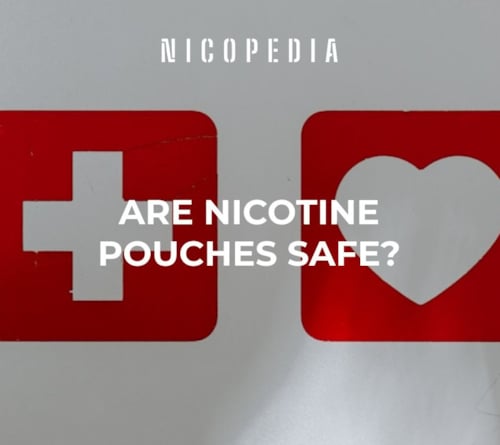Published 2020-06-25
What is Nicotine Poisoning?
A brief article describing where to find nicotine, what causes nicotine poisoning, as well as the most common symptoms of nicotine poisoning and their effects on the body.

What is Nicotine Poisoning? These are the symptoms
The terms ‘overdose’ and ‘poisoning’ are terrifying, so before the term nicotine poisoning awakens too much fear, let us break down what it really is, and what effects it has.
In essence, nicotine poisoning occurs when the body absorbs too much nicotine and experiences a nicotine overdose. This can happen in a number of ways, and is not limited to adults alone.
Where to find nicotine
Nicotine is a main ingredient in all tobacco products. In fact, it’s the ingredient that causes addiction, and keeps people reaching for their cigarettes, vapes or snuff, etc.
Moreover, there are also pure nicotine products, such as chewing gum and pouches, which are mainly used to quit smoking. Nicotine can also be found in some insecticides, and can be absorbed through the skin when exposed to these.
How much nicotine is there in a cigarette?
One cigarette is said to contain about 1 gram of tobacco, which is equal to 8 mg of nicotine; however, smokers never absorb as much as 8 mg into their bloodstreams.
The amount that smokers do absorb depends on various factors, such as the time taken between each inhalation (as tobacco and nicotine burn away between puffs), and the depth of the inhalation (i.e. how much nicotine the smoker inhales with each puff). In fact, it has been said that it’s not common for adults to experience nicotine poisoning from smoking cigarettes.
Moreover, chain smokers (who inhale large amounts of nicotine) have built up a resistance to nicotine over time, and thus are less prone to nicotine poisoning. Rather, the real issue of cigarettes and nicotine poisoning arises when smaller children find their parents’ cigarettes or liquid nicotine and eat them – so please keep your stash well hidden away from your kids – especially those deliciously flavoured liquids that really appeal to children!
What causes nicotine poisoning?
While young children are especially susceptible to nicotine poisoning (as above), teenagers and adults are also at risk. It has been reported that, since the advent of e-cigarettes and vapes, the instances of nicotine poisoning have increased – especially among teens. Interestingly, before these devices, the most common cause of nicotine poisoning was exposure to insecticides that contain nicotine.
This is not to say that vaping is riskier than smoking cigarettes. In fact, vaping eliminates the other 4000+ toxins found in cigarettes. The main thing to consider when indulging in any tobacco product – especially vaping – is to monitor how much nicotine the product contains, and to trust the way your body is responding. Always listen to the clues your body is giving you! It is important to begin with lower doses of nicotine, and to monitor how these levels affect you. If you tend to ask yourself, “why do I feel sick after smoking?”, perhaps you simply need to rethink your nicotine levels.
It’s also important to note that nicotine can be absorbed through the skin and eyes, and therefore exposure to smoke and insecticides through touch and breath can also cause ‘second-hand’ nicotine poisoning, in the same way that cigarette smoke causes ‘second-hand smoking’.
Symptoms of a nicotine overdose
Nicotine poisoning happens in two stages. During the first stage, which happens within the first 15–60 minutes of nicotine overdose, the stimulatory properties of nicotine dominate. You will feel nauseous, you may vomit, there’s excessive salivation, you’ll have a headache, your blood pressure rises, you feel sweaty and dizzy, experience palpitations, breathlessness – and may even become anxious and confused.
Of course, the symptoms will vary from person to person, but if you ever feel strange or uncommonly over-stimulated directly after indulging in a nicotine-based product, please stop and make sure that you are OK. In the second phase of the overdose, your body begins to relax as the ‘depressive’ effects of nicotine kick in – these are the effects associated with the calmness that nicotine normally gives you.
The symptoms you will experience in this phase are quite opposite to the first phase (which could be confusing, as some people may think they have begun to recover from their symptoms from phase one). During this time, your blood pressure will drop and become low, your heart rate will slow down, and your breathing will become more shallow, you’ll start to feel tired and weak, and you may even develop diarrhoea and a pale look to your skin.
In more extreme cases of this phase, seizures may occur, or you may experience difficulty breathing and respiratory failure, or even end up in a coma. Again, these are very extreme cases and, before you panic, remember that the number of fatalities from nicotine poisoning are low. However, if you experience any symptoms in either of the phases, it would be wise to seek medical advice.
In essence, rather than living in fear, it is important to enjoy everything in moderation, and out of the reach and physical exposure of children.
Related articles




